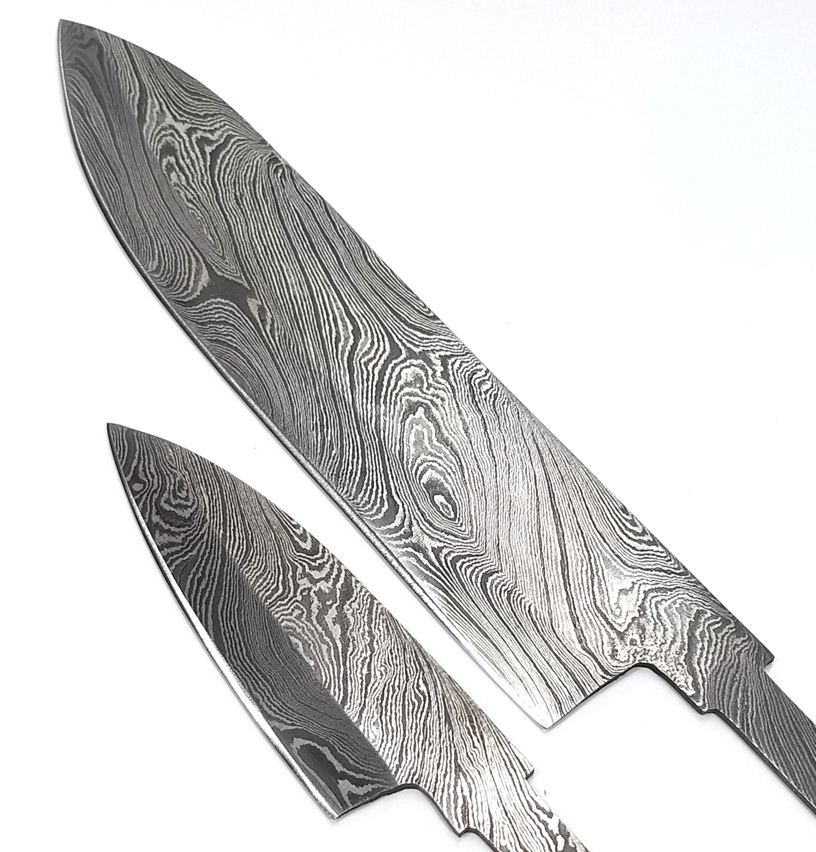Damask knife
Damask knife
A Damask steel knife looks beautiful and is a treat to be allowed to use in your kitchen. Damask steel is also known as Damascus steel. Damast steel is traditionally made a lot in the Middle East and originally only served to improve the quality of the steel. Today, the technique is spread all over the world and in each region there are slight differences and different traditions. Nowadays, damask knives are mostly showpieces that are super sharp to sharpen and have a long tool life. So if you make your own handle on this make sure it will look beautiful!
What is damask steel?
Damask steel is a steel made from different steels, usually 2, but sometimes 3. The steels differ in colour and hardness and are easily distinguishable from each other. These knives are made of 15n20 steel and 1095 high carbon steel. A well-known and widely used combination. Damask forging is a lengthy job. With these knives, it starts with a block of 7 layers of steel, alternating between hard and slightly softer steel. This block is forged (beaten flat), double-folded, forged, double-folded etc. Until there are (in the case of these knives) 256 layers of steel. Long forging improves the quality of the steel and makes it suitable for making top knives.
Sizes
The large knife is about 24 cm long and 45 mm high. The back is 2.5 mm thick. The part mounted in the handle is about 92 mm. hardness 55 - 60 HRC
The small knife is about 12 cm long and 35 mm high. The back is 2.5 mm thick. The part mounted in the handle is about 92 mm. hardness 55 - 60 HRC
Maintenance
When the knives are delivered, they are sharp and ready for immediate use. But the knives can be sharpened much sharper. So live it up, with sharpening and whetstones! The knives can rust. Especially when they are still new. So dry the knives again after use and always make sure they get another coat of oil after use. Or make a cover that is oiled on the inside.
| maat | 12 cm or 24 cm |






